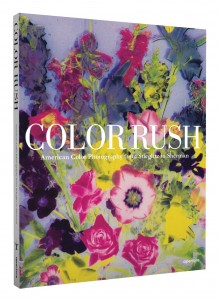 When working a in a library, sometimes you come across a book that demands your attention. I was recently captivated by Color: American Photography Transformed, a gorgeous catalogue from Fort Worth’s Amon Carter Museum of American Art. Nearly every page features large plates of snapshots, advertisements, and artworks. Each seems as fresh and vibrant as they must have appeared to their first viewers.
When working a in a library, sometimes you come across a book that demands your attention. I was recently captivated by Color: American Photography Transformed, a gorgeous catalogue from Fort Worth’s Amon Carter Museum of American Art. Nearly every page features large plates of snapshots, advertisements, and artworks. Each seems as fresh and vibrant as they must have appeared to their first viewers.
Color tells the story of this technique chronologically, highlighting surprisingly early achievements in color photography as well as the art world’s reticence and comparatively late acceptance of the technique. Additionally, the book provides a technical history of color photography which discusses how developments in film and processing changed the look of color photography over the years.
After a thorough thumbing of Color, I had to know more. A quick search of the library catalog led me to Color Rush: American Color Photography from Stieglitz to Sherman. Color Rush takes a different approach to the story of color photography, telling it through the technique’s practitioners. The chapters are organized chronologically but each is made up of articles about notable artists and publications using color photography during that time. (The first chapter, “Early Automatic Color,” has sections on Alfred Stieglitz and National Geographic.)
Where Color gave attention to snapshots by ordinary people, Color Rush focuses more on commercial uses of the technique such as fashion photography and photojournalism. Like Color, the images alone in Color Rush are reason to give the book a read.
Taken together, both Color and Color Rush highlight a history that may have been forgotten in this time of Instagram filters and HD camera phones. It reminds us that life was not always portrayed in living color and that these brilliant renderings are truly something to sing about. Want more on the history of photography? Check out this Unbound post on early cameras. Want more from Smithsonian Libraries? Visit our website, Library.si.edu.

Be First to Comment